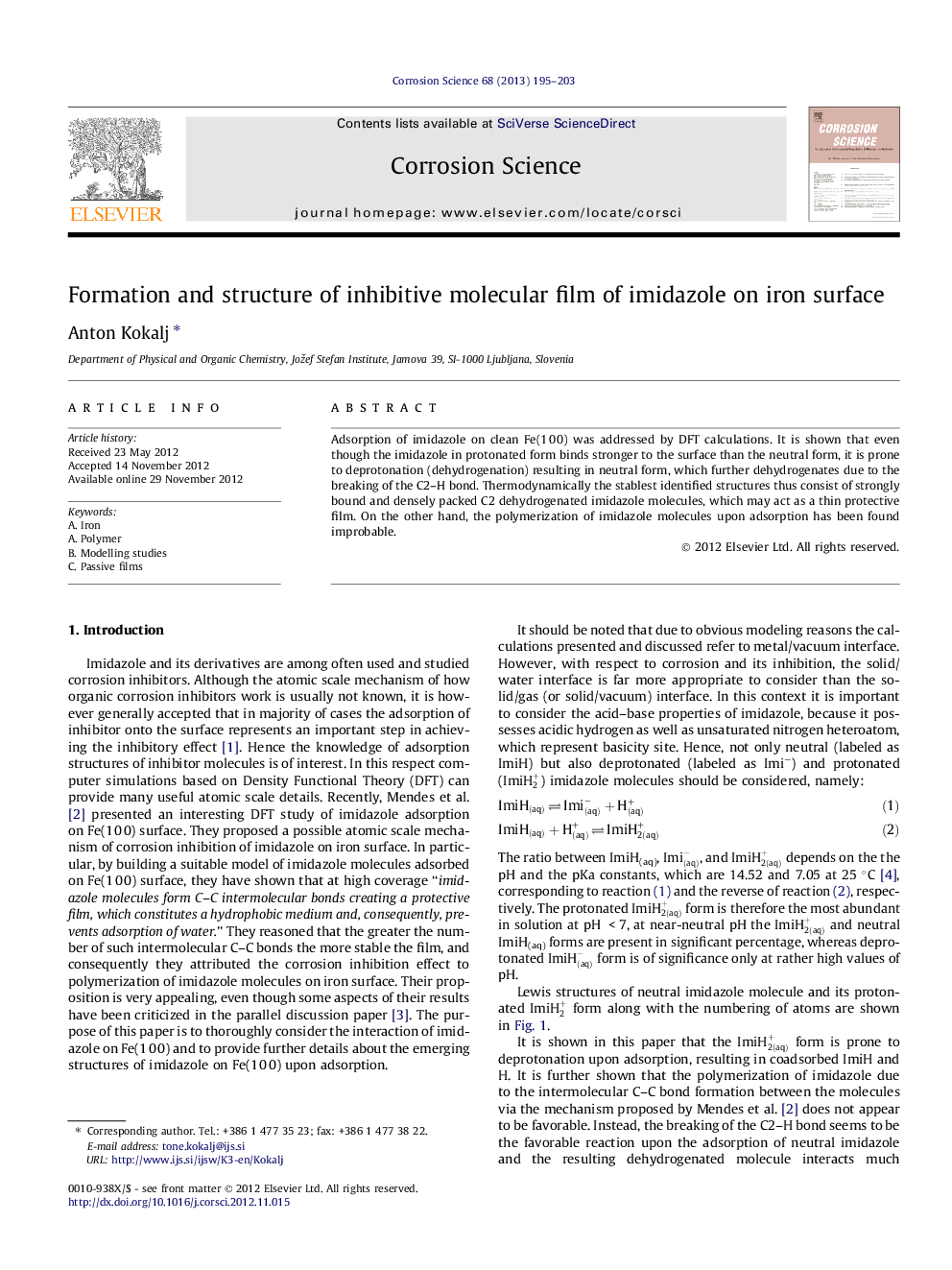| Article ID | Journal | Published Year | Pages | File Type |
|---|---|---|---|---|
| 1469304 | Corrosion Science | 2013 | 9 Pages |
Adsorption of imidazole on clean Fe(1 0 0) was addressed by DFT calculations. It is shown that even though the imidazole in protonated form binds stronger to the surface than the neutral form, it is prone to deprotonation (dehydrogenation) resulting in neutral form, which further dehydrogenates due to the breaking of the C2–H bond. Thermodynamically the stablest identified structures thus consist of strongly bound and densely packed C2 dehydrogenated imidazole molecules, which may act as a thin protective film. On the other hand, the polymerization of imidazole molecules upon adsorption has been found improbable.
Graphical abstractFigure optionsDownload full-size imageDownload as PowerPoint slideHighlights► Atomic scale details of interaction between imidazole and Fe(1 0 0) elucidated by DFT calculations. ► Imidazole dehydrogenates upon adsorption with the C2-H bond cleaved. ► Stablest identified structure consists of high coverage C2 dehydrogenated imidazoles. ► Passivation of Fe(1 0 0) due to strong adsorbate-surface bond and high adsorbate coverage. ► Previously suggested polymerization of imidazole molecules at high coverage is found improbable.
